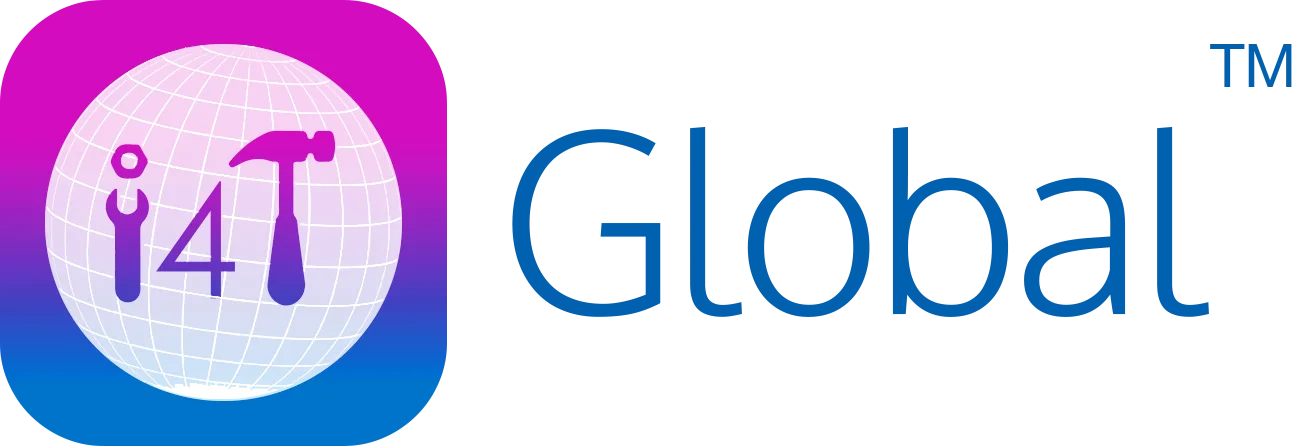Field employee management is an important aspect of a business that relies on mobile staff. The success of a field employee management plan depends on your ability to reduce the churn rate and retain top-performing employees. It can be challenging to retain field employees since they are not in the office every day, and their work environment is constantly changing.
This article will discuss five proven strategies to reduce churn rate and master field employee management.
Introduction to field employee management
Field employee management is managing the staff that operates outside of the office. Field staff may include sales representatives, delivery drivers, maintenance technicians, etc.
The ultimate goal of field employee management is to ensure that your staff is productive, engaging, and satisfied with their work.
You should have a unique approach that considers the unique challenges of managing a mobile workforce so that you can manage them effectively.
Understanding the importance of reducing churn rate
The churn rate is the rate at which employees leave the company. High churn rates can be costly in terms of time and money. When employees leave, finding and training a replacement can take a significant amount of time.
Additionally, high churn rates can impact team morale and productivity. Therefore, reducing the churn rate should be a top priority for any business. The following strategies can help reduce churn and improve field employee management.
Strategy 1: Hiring the right people

Hiring the right people from the start is one of the most effective ways to reduce the churn rate. When hiring field employees, you should look for self-motivated, independent individuals who can work well in a constantly changing environment. Additionally, it is important to ensure that candidates have the necessary experience and qualifications for the job.
Another aspect of hiring the right people is to ensure that candidates fit into the company culture. Field employees should understand the company’s values and goals well. They should also be able to work well with other team members, even if they are in a different location.
To assess candidates effectively, organizations can utilize various tools and techniques.
- Resume screening: This would allow you to evaluate candidates’ qualifications and work experience. It helps identify individuals with the required skills and experience for the position.
- Interviews: Conducting interviews, both in-person and virtual, provides an opportunity to assess candidates’ communication skills, problem-solving abilities, and cultural fit. It is important to structure the interviews with predefined questions and evaluation criteria. This would help to ensure consistency and fairness.
- Skill assessments: You can incorporate technical tests or practical exercises to evaluate candidates’ proficiency in job-related tasks. These assessments provide valuable insights into candidates’ ability to perform their job successfully.
- Reference checks: Make sure to contact the references provided by the candidate. It allows you to gather feedback from previous employers or colleagues. Reference checks can help validate candidates’ qualifications, work ethic, and performance in previous roles.
Strategy 2: Training and development

Training and development are essential for field employees to perform their jobs effectively. Providing training and development opportunities can increase employee engagement and job satisfaction. If the employees feel that they are learning and growing in their roles, they are likely to stay with the company.
Training and development can also improve productivity and reduce errors. Ongoing training can help employees stay up-to-date with technology, processes, and procedures. Additionally, training can help employees feel more confident in their roles, leading to better performance.
Here are some key aspects to consider when implementing training and development programs for field employees:
- Technical skills training: These programs improve technical skills relevant to the field employees’ roles. This can include product knowledge, equipment operation, safety protocols, or specialized techniques. Regular training sessions or workshops can help employees stay up-to-date with industry trends and best practices.
- Soft skills development: Besides technical skills, you should focus on developing soft skills in the workforce. They are essential for effective communication, problem-solving, customer service, and teamwork. Soft skills training can improve interpersonal relationships, customer satisfaction, and overall job performance.
- Leadership and management development: You should offer programs for field employees to develop leadership and management skills. These programs can focus on delegation, decision-making, conflict resolution, and time management. Developing leadership skills in the field force can enhance employee satisfaction and provide growth opportunities, reducing the likelihood of turnover.
- Job rotation and cross-training: Implement job rotation and cross-training programs so field employees can get exposure to different aspects of the organization. This helps to broaden their skill set, increase job satisfaction, and provide career advancement opportunities within the company.
Strategy 3: Communication and feedback

Communication and feedback are crucial for effective field employee management. Since field employees are away from the office, ensuring they are on track and performing their duties effectively can be challenging. Therefore, regular communication and feedback can help bridge this gap.
Communication can be through regular check-ins, team meetings, or virtual calls. It is important to ensure that field employees feel attached and connected to the company and their team members.
Here are some key tips for effective communication and feedback in a field employee management context:
- Open and transparent communication: Promote open communication channels so the field employees feel comfortable sharing their ideas, concerns, and feedback. Encourage two-way communication to foster a sense of collaboration and engagement.
- Regular check-ins: Schedule regular check-ins with field employees to discuss their progress, challenges, and any support they may need. These one-on-one meetings provide an opportunity to address concerns, provide guidance, and ensure employees feel valued and supported.
- Clear expectations: Clearly state your expectations regarding job responsibilities, performance standards, and goals. Ensure that field employees clearly understand their roles and how their contributions align with organizational objectives.
- Field communication tools: Utilize effective communication tools to connect with field employees who may be geographically dispersed. Mobile apps, messaging platforms, or video conferencing tools enable real-time communication, ensuring that field employees are informed and connected.
Strategy 4: Recognition and rewards

Recognition and rewards can be powerful motivators for field employees. Providing recognition and rewards for a job well done can increase employee engagement and job satisfaction. You can reward the workforce through bonuses, promotions, or other incentives.
When field employees feel valued and appreciated, they are more likely to remain engaged and committed to their roles. Here are some effective types of recognition and rewards for field employees:
- Performance-based bonuses: Provide monetary bonuses or incentives based on performance metrics such as meeting targets, customer satisfaction ratings, or completing projects successfully. Performance-based bonuses serve as a direct recognition of exceptional achievements.
- Employee of the Month/Quarter/Year: Implement an employee recognition program where outstanding field employees are recognized regularly. This can be done through a nomination and selection process accompanied by public announcements, certificates, or plaques.
- Peer recognition: You can establish a system encouraging field employees to recognize and appreciate their colleagues’ achievements. This can be peer nominations, thank-you notes, or shout-outs in team meetings or newsletters. Peer recognition can foster strong team bonds.
- Career development opportunities: Offer field employees opportunities for professional growth and advancement. You can fund certifications, training programs, or conferences that align with their career goals. Providing avenues for skill enhancement and career progression shows that their long-term development is valued.
Strategy 5: Work-Life Balance

Achieving work-life balance can be challenging for field employees, as their work environment constantly changes. However, promoting work-life balance is a crucial strategy for reducing field force churn. It helps prevent burnout, improves job satisfaction, and enhances employee retention. Here are some tips you can use to promote work-life balance for field employees:
Clearly define expectations: Set clear expectations regarding work hours, availability, and response times. Establish boundaries to ensure that field employees have dedicated time for personal activities and rest.
- Flexible schedules: Offer flexible work schedules so field employees can effectively manage their personal commitments. This could include options for adjusted start and end times, compressed workweeks, or remote work arrangements when feasible.
- Time off and vacations: Encourage field employees to take regular time off and utilize their vacation days. Promote the importance of rest and recharge by actively supporting and approving requested time off.
- Adequate staffing: Ensure an adequate workforce to distribute workload evenly and prevent excessive overtime or burnout. Monitor workload levels to ensure they are manageable and realistic for the team.
- Technology for remote access: Provide field employees with the necessary technology tools and access to systems that enable remote work and flexibility. This allows them to complete administrative tasks or access resources without being tied to a physical office location.
Conclusion
Effective field employee management requires a unique approach considering the challenges of managing a mobile workforce. Implementing the five strategies outlined above can reduce the churn rate, improve employee engagement, and increase productivity. Remember to tailor these strategies to the unique needs of your business. Further, you should track the results to measure the success of your field employee management plan.
Reducing churn rate and mastering field employee management is crucial for the success of any business.
If you are looking for tools to help implement these strategies, consider using field service management software like i4T Business. Our software promotes easy, quick, and open communication among the team.
The field force can voice their opinion and questions through the software. Further, i4T Business can facilitate scheduling, dispatching, and tracking work orders which can prevent unnecessary burnouts.
Our FSM software can help minimize churn and boost employee happiness by improving communication, optimizing workflows, and reducing administrative tasks. Contact us or request a demo to learn more.
FAQs
Field employee management refers to effectively overseeing and supporting employees who work remotely or in the field. It involves managing their schedules, tasks, and performance and providing the necessary resources to ensure success.
Leadership plays a crucial role in setting the right culture, providing support and guidance. Further, they should create an environment where field employees feel valued, engaged, and motivated to stay with the organization.
This includes a lack of support and communication, inadequate training and development, low job satisfaction, work-life imbalance, and limited growth opportunities.
It helps maintain a stable and experienced field workforce, reduces recruitment and training costs, and improves overall productivity and customer satisfaction.
The five proven strategies are: hiring the right people, training and development, effective communication and feedback, recognition and rewards, and promoting work-life balance.
Hot off the press!

With our cutting-edge technology and in-depth knowledge of how the Field Service Management sector operates, the i4TGlobal Team loves to share industry insights to help streamline your business processes and generate new leads. We are driven by innovation and are passionate about delivering solutions that are transparent, compliant, efficient and safe for all stakeholders and across all touch points.
Recent articles that may interest you as well..




